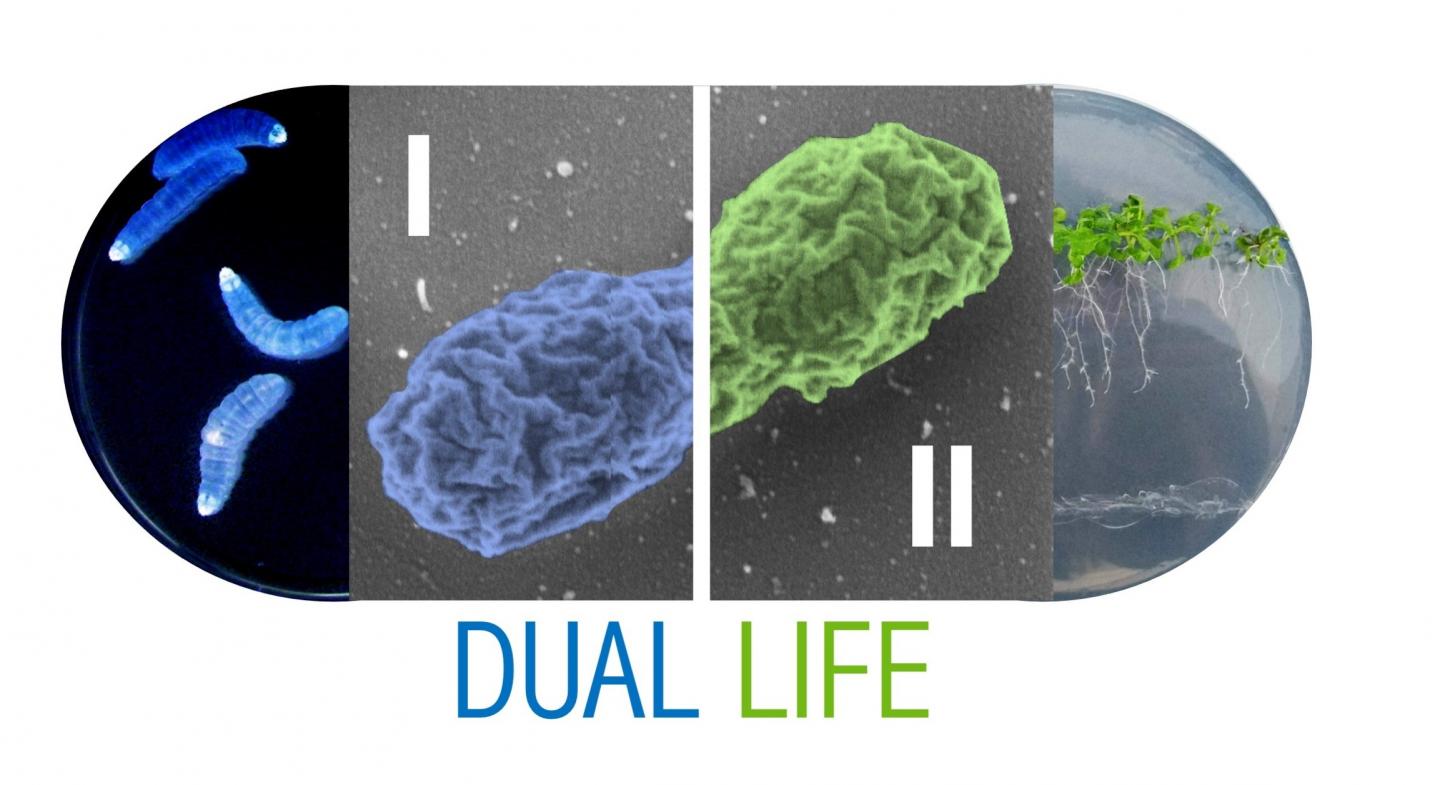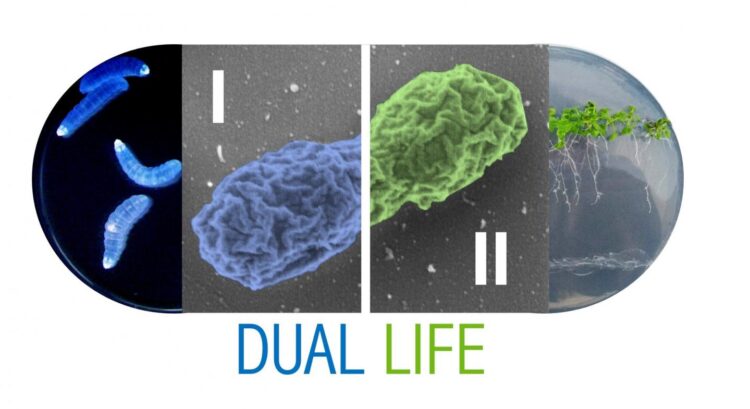New form of insect-pathogenic bacterium extends the options for sustainable crop protection and biological pest control in agriculture

Credit: ill./©: Nazzareno Dominelli, Ralf Heermann
One of the basic approaches in organic farming is to use organisms beneficial to the system to combat pests. The bacterium Photorhabdus luminescens is one such beneficial organism. In the case of insect larvae infestation, the bacterium produces a variety of different toxins which quickly kill the larvae. Yet, it seems this is not the only ability of Photorhabdus that can be exploited for organic plant cultivation. A research team led by Professor Ralf Heermann at Johannes Gutenberg University Mainz (JGU) has discovered additional properties that could significantly extend its range of uses. “We have identified a new form of the bacterium that was previously unknown,” Heermann pointed out. This has a direct relationship with the roots of plants. The researchers think that here it promotes plant growth primarily by releasing substances which combat plant-damaging fungi.
Bioluminescent symbiotic bacteria cause their insect victims to glow
Bacteria of the Photorhabdus luminescens family are close relatives of the plague pathogen Yersinia pestis. However, they do not pose a danger to humans, but rather stand out for a different characteristic: The insect larvae they kill become luminescent. As well as harmful toxins, for reasons that are as yet unclear, Photorhabdus also produces the enzyme luciferase, which causes the body of the victim to glow as it decays. This form of Photorhabdus lives in close symbiosis with small nematodes that penetrate into insect larvae and release the bacteria inside them. But it appears that the newly identified variant does not need a host. “We were surprised to find that a large proportion of the population was developing differently and looked into why this was,” explained Heermann.
His team first used molecular biological techniques to analyze the transcriptome, i.e., the total number of gene transcripts in a cell, and found that there were actually two variants. According to the results, the new variant differs on a number of levels as it is more mobile and sensitive, reacts to plant exudates, and is attracted towards them. “All this points to the fact that this bacterial variant interacts more intensely with plants,” said Heermann. In the next stage, the research team looked at the interaction more closely. They discovered that the new variant bacterium changes its metabolism to increase the utilization of sugar instead of protein and produces substances that inhibit the growth of fungi that are pathogenic to plants. “A completely different set of natural substances is produced when this bacterium comes into contact with plants,” Heermann added.
Second bacterial variant offers new prospects for organic farming
The researchers do not know yet why there is this second variant of Photorhabdus luminescens, which, despite being genetically identical to its primary form, behaves differently and also does not produce luciferase. The two first authors of the paper published in Applied and Environmental Microbiology, Dr. Alice Regaiolo and Nazzareno Dominelli, postulate that the purpose of this is to ensure there is a variant of Photorhabdus luminescens that can survive and fend for itself even if the other variant is unable to prosper because the host nematodes do not find any insects. In any case, there may be completely new prospects for sustainable crop protection in agriculture: The bacteria could be used to combat pests and also promote plant growth. The question now arises of whether other pathogenic bacteria also lead such a “dual life”. So far, this has been the first time that this phenomenon was observed.
###
Media Contact
Professor Dr. Ralf Heermann
[email protected]
Original Source
https:/
Related Journal Article
http://dx.




